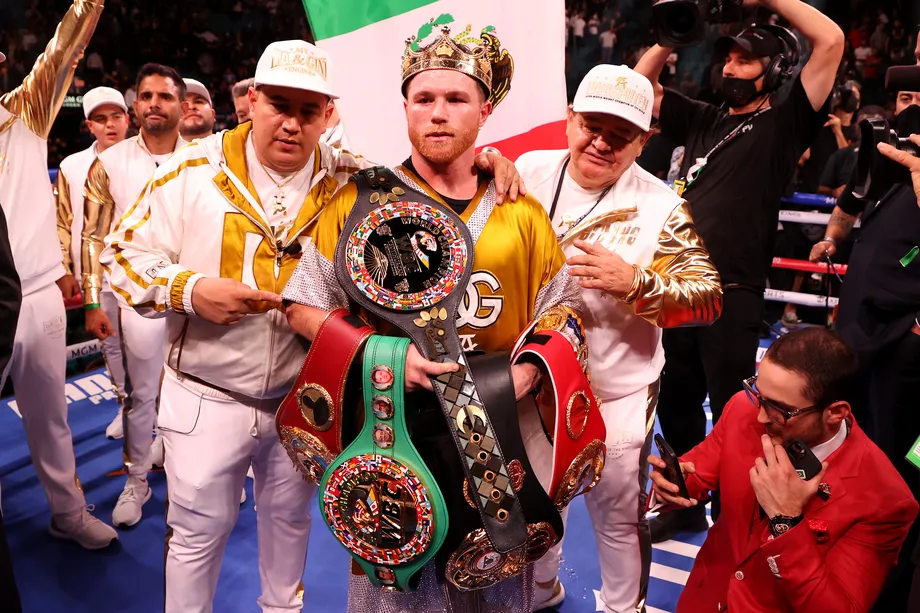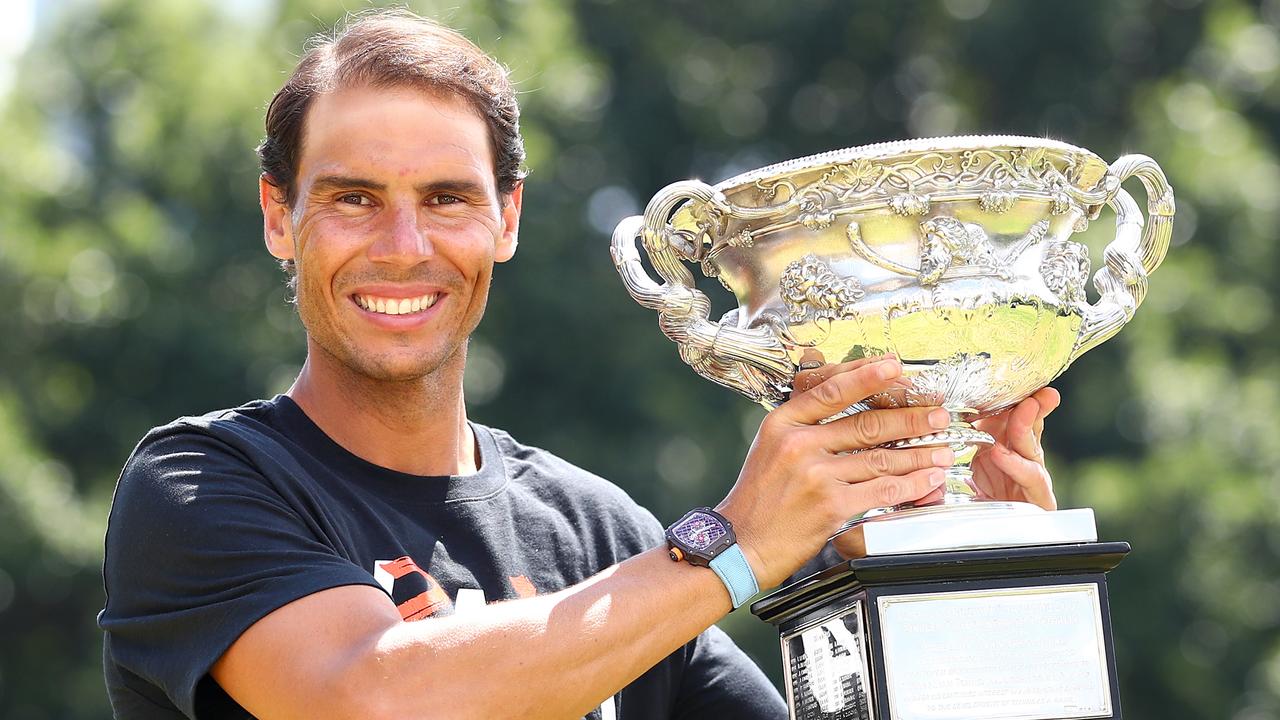It’s hot out. That means it’s time for tennis.
The men’s and women’s tours have already begun to descend upon Australia for the lead-up to the season’s opening grand slam, and the main event itself – the Australian Open – across the last two weeks of January.
Things will look a bit different this year with the United Cup replacing the men-only ATP Cup, ensuring the world’s top talents are in action from December 29.
And in total there will be five lead-up tournaments, plus qualifying, across seven states and territories before the action truly gets underway at Melbourne Park.
Watch Tennis Live with beIN SPORTS on Kayo. Live Coverage of ATP + WTA Tour Tournaments including Every Finals Match. New to Kayo? Start your free trial now >
All major tournaments will air on Nine and its platforms, with the exception of the Kooyong Classic which airs on SBS.
Here’s everything you need to know about the 2023 Australian summer of tennis.
Ash Barty wins Newcombe Medal for 2022 | 01:22
UNITED CUP
Dates: December 29 to January 8
Venue: Pat Rafter Arena, Brisbane (group stage); RAC Arena, Perth (group stage); Ken Rosewall Arena, Sydney (group stage and final four)
Category: ATP/WTA mixed team competition
Draw size: Six groups of three countries, 18 countries in total, up to eight players per country
Ever since the Hopman Cup was effectively abandoned after its greatest moment – when Serena Williams faced Roger Federer in mixed doubles, to enormous interest – tennis has been trying to get a pre-Australian Open teams event to work.
The ATP Cup gathered some interest, with Novak Djokovic and Rafael Nadal squaring off in the final of the inaugural edition, but without women involved it still felt a bit empty. It’s hoped the United Cup can help fix that.
Most of the world’s top players will participate across the three host cities, thanks to the $15 million in prize money plus ATP/WTA ranking points on offer, with the three city winners plus the best second-place team advancing to the finals in Sydney.
The absentees are most notable on the men’s side with Novak Djokovic, Canadian pair Felix Auger-Aliassime and Denis Shapovalov (who led their nation to victory in last year’s ATP Cup), and Russians-not-but-credited-as-such Daniil Medvedev and Andrey Rublev all playing the Adelaide International instead. On the women’s side world No.2 (though a long, long way back from No.1) Ons Jabeur is missing, along with the three top-10 women from Belarus and Russia – Aryna Sabalenka, Daria Kasatkina and Veronika Kudermetova.
Australia copped a tricky draw, playing off in Sydney against Great Britain (led by Cam Norrie and Daniel Evans) and most notably Spain (with Rafael Nadal, Paula Badosa and Pablo Carreno Busta all ranked in the top 13, though new world No.1 Carlos Alcaraz will miss).
Australia will face the Brits on December 29 and 30, then the Spanish on January 2 and 3. The latter fixture means there’ll be a Nick Kyrgios v Rafael Nadal showdown.
UNITED CUP TEAMS AND PLAYERS
PERTH
Group A
Greece
Men: Stefanos Tsitsipas, Michail Pervolarakis, Stefanos Sakellardidis, Petros Tsitsipas
Women: Maria Sakkari, Despina Papamichail, Valentini Grammatikopoulou, Sapfo Sakellaridi
Belgium
Men: David Goffin, Zizou Bergs, Kimmer Coppejans, Michael Geerts
Women: Elise Mertens, Alison Van Uytvanck, Magali Kempen, Kirsten Flipkens
Bulgaria
Men: Grigor Dimitrov, Dimitar Kuzmanov, Adrian Andreev, Alexandar Lazarov
Women: Viktoriya Tomova, Isabella Shinikova, Gergana Topalova
Group F
France
Men: Arthur Rinderknech, Adrian Mannarino, Manuel Guinard, Edouard Roger-Vasselin
Women: Caroline Garcia, Alize Cornet, Leolia Jeanjean, Jessika Ponchet
Croatia
Men: Borna Coric, Borna Gojo, Matija Pecotic
Women: Petra Martic, Donna Vekic, Tara Wurth, Petra Marcinko
Argentina
Men: Diego Schwartzman, Francisco Cerundolo, Federico Coria, Andres Molteni
Women: Nadia Podoroska, Maria Carle, Paula Ormaechea
BRISBANE
Group B
Poland
Men: Hubert Hurkacz, Kamil Majchrzak, Daniel Michalski, Lukasz Kubot
Women: Iga Swiatek, Magda Linette, Weronika Falkowska, Alicja Rosolska
Switzerland
Men: Stan Wawrinka, Marc-Andrea Huesler, Dominic Stricker, Alexander Ritschard
Women: Belinda Bencic, Jil Teichmann, Ylena In-Albon, Joanne Zuger
Kazakhstan
Men: Aleander Bublik, Timofey Skatov, Denis Yevseyev, Grigoriy Lomakin
Women: Yulia Putintseva, Zhibek Kulambaveva, Gozal Ainitdinova
Group E
Italy
Men: Matteo Berrettini, Lorenzo Musetti, Andrea Vavassori, Marco Bortolotti
Women: Martina Trevisan, Lucia Bronzetti, Camila Rosatello, Nuria Brancaccio
Brazil
Men: Thiago Monteiro, Felipe Meligeni Alves, Matheus Pucinelli de Almeida, Rafael Matos
Women: Beatriz Haddad Maia, Laura Pigossi, Carolina Alves, Luisa Stefani
Norway
Men: Casper Ruud, Viktor Durasovic, Andreja Petrovic
Women: Ulrikke Eikeri, Malene Helgo, Lilly Haseth
SYDNEY
Group C
USA
Men: Taylor Fritz, Frances Tiafoe, Denis Kudla, Hunter Reese
Women: Jessica Pegula, Madison Keys, Alycia Parks, Desirae Krawczyk
Germany
Men: Alexander Zverev, Oscar Otte, Daniel Altmaier, Fabian Fallert
Women: Laura Siegemund, Jule Niemeier, Anna-Lena Friedsam, Julia Lohoff
Czech Republic
Men: Jiri Lehecka, Tomas Machac, Lukas Rosol, Dalibor Svrcina
Women: Petra Kvitova, Marie Bouzkova, Jesika Maleckova
Group D
Spain
Men: Rafael Nadal, Pablo Carreno Busta, Albert Ramos-Vinolas, David Vega Hernandez
Women: Paula Badosa, Nuria Parrizas Diaz, Jessica Bouzas Maneiro
Australia
Men: Nick Kyrgios, Alex de Minaur, Jason Kubler, John Peers
Women: Ajla Tomljanovic, Zoe Hives, Maddison Inglis, Sam Stosur
Great Britain
Men: Cameron Norrie, Dan Evans, Jan Choinski, Jonny O’Mara
Women: Harriet Dart, Katie Swan, Anna Brogan, Ella McDonald
Fed explains WILD Wimbledon story | 02:29
CANBERRA INTERNATIONAL
Dates: December 31 to January 7
Venue: Canberra Tennis Centre, Canberra
Category: ATP Challenger Tour / ITF W60
Draw size: ATP – 32 singles, 16 doubles; ITF – 32 singles, 16 doubles
ADELAIDE INTERNATIONAL 1
Dates: January 1 to 8
Venue: The Drive, Adelaide
Category: WTA 500 / ATP 250
Draw size: ATP and WTA – 32 singles, 24 doubles
ADELAIDE INTERNATIONAL 2
Dates: January 9 to 14
Venue: The Drive, Adelaide
Category: WTA 500 / ATP 250
Draw size: WTA – 32 singles, 16 doubles; ATP – 28 singles, 24 doubles
Most of the big names not featuring in the United Cup will head to Adelaide instead, with a particularly strong men’s field in the first tournament that features eight of the top 20.
The second tournament loses Novak Djokovic but gains Nick Kyrgios, and gets scarily good on the women’s side, with Iga Swiatek, Jessica Pegula and Caroline Garcia joining Ons Jabeur to complete the WTA top four.
Kyrgios headlines Adelaide International | 00:31
HOBART INTERNATIONAL
Dates: January 9 to 14
Venue: Domain Tennis Centre, Hobart
Category: WTA 250
Draw size: 32 singles, 16 doubles
AUSTRALIAN OPEN QUALIFYING
Dates: January 9 to 12
Venue: Melbourne Park, Melbourne
Category: Grand Slam
Draw size: 128 men and women
KOOYONG CLASSIC
Dates: January 10 to 12
Venue: Kooyong Lawn Tennis Club, Melbourne
Category: Exhibition
Draw size: 8 men
The unique and traditional tune-up event does not have ranking points on offer, but does have the sole appearance before the Australian Open of world No.1 Carlos Alcaraz, along with Aussie star Alex de Minaur.
VICTORIAN WHEELCHAIR OPEN
Dates: January 10 to 14
Venue: Hume Tennis Centre, Melbourne
Category: ITF 1 Series
Draw size: 32 men’s singles, 24 women’s singles, 16 quad singles, 16 boys’ singles
AUSTRALIAN OPEN
Dates: January 16 to 29
Venue: Melbourne Park, Melbourne
Category: Grand Slam
Draw size: 128 singles, 64 doubles
Here’s the big one, and on both sides there is plenty of intrigue but for quite different reasons.
Let’s start with the women, where defending champion Ash Barty obviously won’t be defending; so we have to wonder whether the result is a fait accompli?
Iga Swiatek, after all, has dominated the WTA tour since Barty’s retirement. Making the semi-finals last year at Melbourne Park, she went on to win 37 straight matches, along with the French Open (for the second time) and US Open (for the first). She has more than double the ranking points of world No.2 Ons Jabeur.
From an Aussie perspective it’s almost frustrating, because it’s quite clear Barty would’ve been the only woman able to truly challenge Swiatek right now. But instead, we’re left to wonder who could cause an upset as the Pole bids for her first Australian Open crown.
The odds of an upset are still good, because it’s simply very hard to win a grand slam – last year Barty was the first women’s top seed to win the Aussie Open since Serena Williams in 2015.
So could it be Jabeur, who made the Wimbledon and US Open finals to end last year? Jessica Pegula, the world No.3 who has made the quarter-finals in Melbourne twice in a row? Caroline Garcia, the world No.4 who had done little to suggest slam-winning potential until the end of 2022, when she made the US Open semi-finals and then won the WTA Finals? Or perhaps last year’s finalist Danielle Collins, or two-time champ Naomi Osaka, who’ll have to make a run while unseeded?
That’s the great thing about the women’s tour: there are always plenty of contenders. Even if Swiatek looks streets ahead right now.
On the men’s side, the title race feels even more open – even if the guy who always wins here is finally back.
Novak Djokovic, assuming he gets through border control, will be the favourite to claim a record 10th Australian Open crown but where he falls in the draw will be fascinating. He dominated when he played last year, but because of his Covid decisions, he didn’t play quite as often as his fellow top stars, leaving him ranked outside the top four.
He could easily fall into an earlier-than-expected match-up with Rafael Nadal, the defending champion and all-time men’s record-holder with 22 slams (a record he effectively holds because Djokovic wouldn’t get vaccinated).
Nadal’s remarkable run to the 2022 crown looks even more so with hindsight – needing two five-set wins, including that absurd final where he stormed back from two sets down.
It was a fairytale ending – arguably the greatest seen at the tournament since 2017, when Roger Federer downed Nadal in that famous final, marking the late-career revival which gave him three more slam titles.
And remember what happened after Federer won in 2017 out of nowhere? He won in 2018, too, taking advantage of Djokovic and Nadal’s relatively early exits and beating Marin Cilic in the final. Perhaps Nadal can do the same after his magical 2022 run?
But neither of those two legends will be the No.1 seed – Carlos Alcaraz, the boy wonder who has delivered on his immense promise earlier than anyone expected, will.
The youngest ever men’s world No.1, Alcaraz came of age at last year’s US Open, taking advantage of Djokovic’s absence and Nadal’s fourth-round loss to Frances Tiafoe, beating fellow young gun Casper Ruud in the final.
In fact, either Alcaraz or Ruud winning at Melbourne Park would not be a massive shock; this feels like the inflection point tennis has been waiting for, where the next generation finally has as much of a chance as the old guard to win any given slam. (Except Roland Garros.)
Daniil Medvedev, the man who was two sets up on Nadal in last year’s final, is sort of in the middle ground but after making the decider in consecutive Australian Opens, is another strong contender to finally claim one.
And then, of course, there’s the Nick Kyrgios question. He won’t be the dangerous, unseeded floater of the last two editions – set to be seeded at around No.22, Kyrgios should at least be expected to make the third round. A repeat of 2020, when he made the fourth round and lost to top-seeded Nadal in four sets, would not surprise.
But he’s better than he was in 2020. After all, 2022 was a breakout year for Kyrgios, claiming his first slam title (in doubles in Melbourne), making the Wimbledon final and sitting at the US Open’s quarter-final stage arguably the title favourite, after beating Medvedev in four sets.
He lost a five-setter to Karen Khachanov in the quarters, but a statement was made nonetheless. Kyrgios hadn’t made the quarters of a slam since 2015, then did it twice in a row.
This is the closest he has come to living up to his immense talent and, in his prime at age 27 – and likely close to an early retirement to simply enjoy his life – now appears his best chance of becoming Australia’s first local men’s champion since Mark Edmondson in 1976.
MELBOURNE WHEELCHAIR OPEN
Dates: January 16 to 20
Venue: Hume Tennis Centre, Melbourne
Category: ITF Super Series
Draw size: 32 men’s singles, 24 women’s singles, 24 quad singles, 16 boys’ singles
AO JUNIOR CHAMPIONSHIPS
Dates: January 21 to 28
Venue: Melbourne Park, Melbourne
Category: Junior Grand Slam
Draw size: 64 singles, 32 doubles
AO WHEELCHAIR CHAMPIONSHIPS
Dates: January 24 to 28
Venue: Melbourne Park, Melbourne
Category: Grand Slam
Draw size: 16 men’s singles, 16 women’s singles, 8 quad singles
BURNIE INTERNATIONAL 1 and 2
Dates: January 30 to February 13
Venue: Burnie Tennis Club, Burnie, Tasmania
Category: Week 1 – ATP Challenger / ITF W60, week 2 – ITF 25
Draw size: ATP – 32 singles, 16 doubles; ITF – 32 singles, 16 doubles







